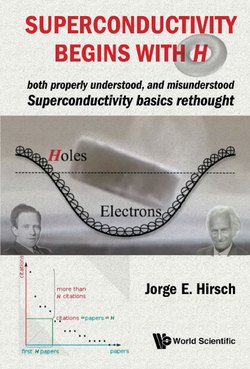Описание книги
This iconoclastic book proposes that superconductivity is misunderstood in contemporary science and that this hampers scientific and technological development. Superconductivity is the ability of some metals to carry electric current without resistance at very low temperatures. Properly understanding superconductivity would facilitate finding materials that superconduct at room temperature, providing great benefits to society.The conventional BCS theory of superconductivity, developed in 1957 and awarded the Nobel Prize in 1972, is generally believed to fully explain the lower temperature 'conventional superconductors' but not the more recently discovered 'high temperature superconductors', for which the charge carriers are positive holes rather than negative electrons. Instead, this book proposes the holistic view that holes are responsible for superconductivity in all materials. It explains in simple terms how the most fundamental property of all superconductors, that they expel H-fields (the Meissner effect), can be understood with hole carriers and cannot be explained by BCS. It describes the historical development of the conventional theory and why it went astray, and credits pre-BCS researchers for important insights that were forgotten after BCS but are in fact relevant for the proper understanding of superconductivity.<b>Contents:</b> <ul><li><b><i>Overview of Supercoductivity:</i></b><ul><li>Introduction</li><li>Bird's Eye View of Superconductivity: Heroes and Villains</li><li>Bird's Eye View of Superconducting Materials</li><li>BCS and Hubbard: Theories of Superconductivity That Don't Explain It</li><li>Electrons and Holes in Solids:: The Key to Superconductivity</li></ul></li><li><b><i>The Key Questions That Need to be Answered:</i></b><ul><li>The Simplest Question in Superconductivity, That BCS Doesn't Answer</li><li>Meissner Effect and London Theory</li><li>Essential Points of BCS, and Why It Doesn't Explain the Meissner Effect</li><li>The Meissner Effect in More Detail</li><li>The Key to the Meissner Effect: Charge Expulsion</li></ul></li><li><b><i>Conventional Theory and the New Materials:</i></b><ul><li>Theories of Superconductivity Before BCS, That Explain More than BCS</li><li>Phonons and the Beginning of Obscurantism</li><li>Herbert Fröhlich's Deception and Its Consequences</li><li>1957–1980: The Golden Age of BCS Theory</li><li>Holes in Cuprates and Other Materials</li></ul></li><li><b><i>Electron–Hole Asymmetry and Its Consequences:</i></b><ul><li>The Fundamental Asymmetry Between Electrons and Holes</li><li>Superconductors as 'Giant Atoms'</li><li>Holes, Charge Expulsion and Internal Electric Field</li><li>Mesoscopic Orbits and Spin Currents</li><li>Kinetic or Potential Energy? Liquid Helium Provides the Answer</li></ul></li><li><b><i>Answers to the Key Questions and Conclusions:</i></b><ul><li>Spinning Superconductors and Ice Skaters: The Smoking Gun</li><li>The Meissner Effect Explained (Almost All)</li><li>The Secret of the Holes</li><li>BCS versus Hubbard versus Holes</li><li>How to Find and Not Find High Temperature Superconductors</li></ul></li></ul><br><b>Readership:</b> Undergraduates, graduates, research professionals and the general public interested in superconductivity.Hole Superconductivity;Meissner Effect;BCS Theory;Alfven's Theorem;H-index0<b>Key Features:</b><ul><li>There is no other book that explains superconductivity the way this book does. This book addresses and answers the simplest and most fundamental questions about superconductivity: how does a supercurrent start and stop? How is momentum conservation satisfied, and how is Faraday's law not violated? How does a rotating superconductor generate a magnetic field defying the law of inertia? Other books on superconductivity don't even mention these basic questions, because the conventional theory has no answers for them</li><li>Other existing books on superconductivity require advanced scientific training and yet do not correctly explain their basic physics. Or, they give a superficial qualitative overview of superconductors without explaining how they work. This book provides a unified understanding of all superconducting materials, unlike all other books on superconductivity that make a sharp distinction between 'conventional' and 'unconventional' superconductors</li><li>The book's author, Jorge E. Hirsch, is a renowned expert in the field of condensed matter physics, having published over 250 articles on the subject. He has developed the theory of 'hole superconductivity', the focus of this book, over the last 30 years and published over 100 scientific articles on it. He is also the inventor of the H-index, a bibliometric measure of scientific achievement that is used world-wide across scientific disciplines which, he admits in this book, fails to identify high scientific achievement in the field of superconductivity. His <i>H</i>-index is 58</li></ul>
